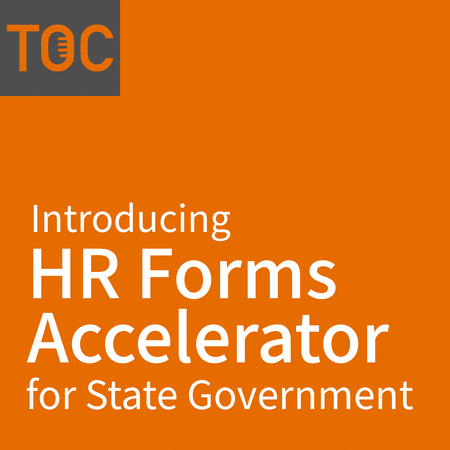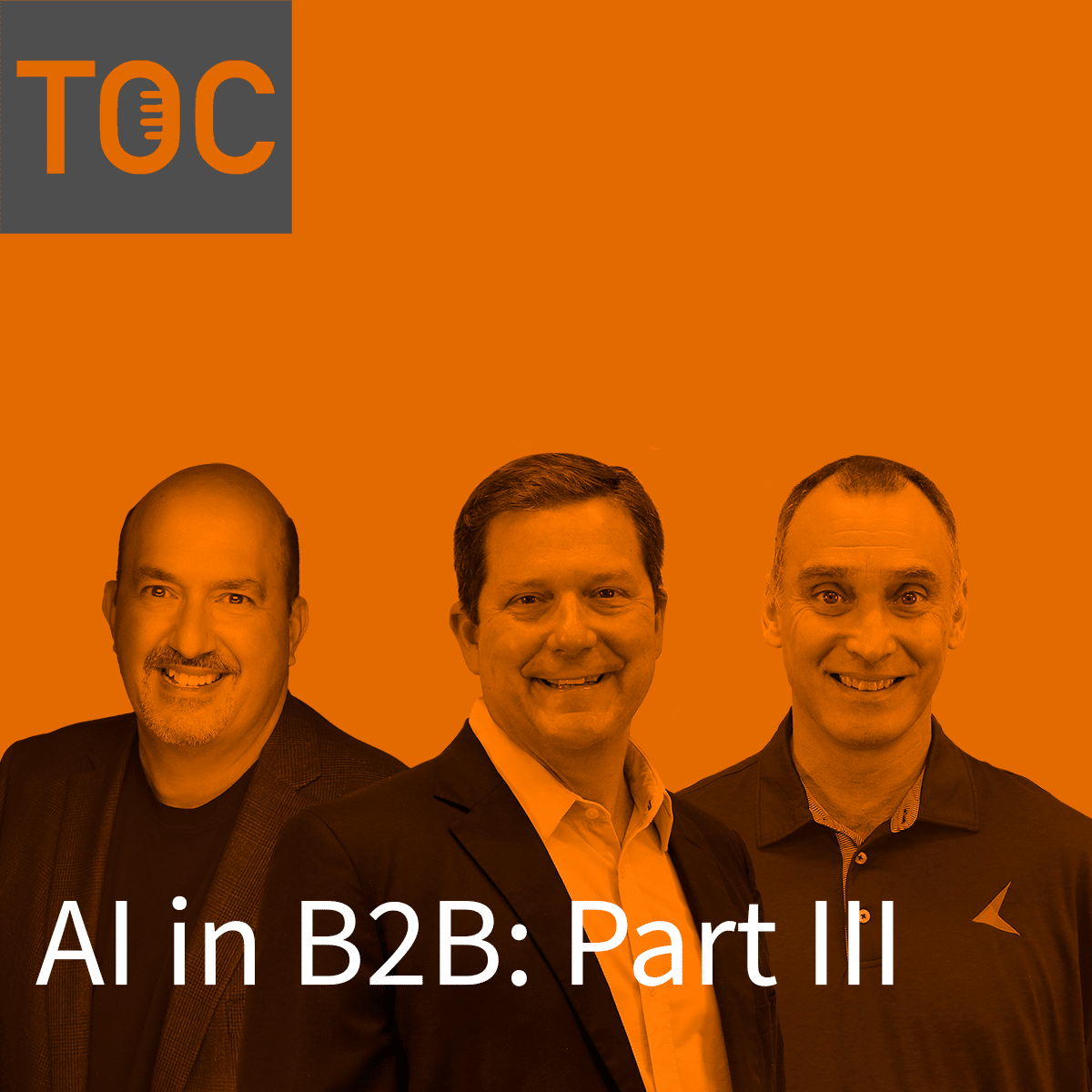Caroline Ramackers (17s): Hello, everybody, and welcome back to the Orange Chair Podcast. In this episode, KeyMark’s own Jake Wanner and Chris Johnson will walk through the ins, outs, and use cases of KeyMark’s HR Accelerator, a custom-built configuration of OnBase.
As you will soon learn, the HR accelerator was designed with specific government HR processes in mind, helping the state agencies digitize, centralize, and automate content in forms related to HR processes.
While the HR accelerator provides a templated framework for the most common HR problems, it can be further customized and applied to departments beyond human resources.
But don’t take my word for it. Without further adieu, let’s catch up with Jake and Chris to continue exploring the HR forms accelerator and its incredible potential to transform government.
OnBase in the State of South Carolina
Chris Johnson (1m06s): Welcome to the Orange Chair Podcast. I’m Chris Johnson with KeyMark. I’m our director of public sector sales and have been around KeyMark for, I don’t know, 100 years? Actually 17, but feels like it. Jake, you want to introduce yourself?
Jake Wanner (1m22s): Yeah, of course. Jake Wanner here! I’ve been with KeyMark I think it’s going on 7 years. I’m an account manager here working alongside Chris and supporting our state and local government accounts as well.
Chris Johnson (1m36s): So what we’re here to talk about today is a specific configuration of HR within OnBase to automate HR processes in that specific department here in South Carolina. And I think with the accelerator, well we will get into what the accelerator is here in a minute. Jake, you want to talk a little bit about OnBase?
Jake Wanner (1m57s): Yeah. So OnBase is a content services platform that we support alongside South Carolina Division of Technology. They’ve had the solution for, what, 15 years?
Chris Johnson (2m09s) 16 years. Started with the integration with SAP.
Jake Wanner (2m12s): Yep. So, we’ve had a chance to work alongside them with 29 agencies in the state and that number is rapidly growing for sure. We’ve been focused on business process automation that entire time. So being able to take a business process, and apply technology to it using the OnBase tool. And so what we’ve done is, in the past couple of years, we’ve seen this need with a number of agencies to digitize content related to HR functions. And that’s kind of how the HR accelerator, got kicked off. But anything else you want to add?
South Carolina OnBase Configuration
Chris Johnson (2m48s): Yeah. So, first of all, I want to dovetail on what you said there. We’ve done a lot of work with different agencies, and one of the things we came to realize was that there are very similar processes, particularly within HR. We don’t have to recreate the wheel from one instance to the next or one agency to the next in HR.
And one of the things that’s unique about OnBase is that, you know, we can do that configuration of HR and the standard processes and essentially drop that into another agency, and it’s a very similar process.
OnBase allows you to customize that significantly. So, if there are unique things within HR with the federal government or providers or whatever from HR, we can configure that to be very specific and very specific business processes outside of that accelerator.
What is the HR Accelerator?
Jake Wanner (3m49s): Yeah, and I think that’s a good segue into what we call the HR Accelerator, but really it’s just digitizing forms and allowing agencies to have a centralized workflow process for those forms. So, it boils down to being able to store content in an electronic format with the documents.
So we have a, and I’ll say, preconfigured, but there’s definitely some level of customization with each agency, but we allocate for that, and It’s a relatively manageable tool when it comes to that configuration effort. So agencies are able to take ownership of that, which is great. But it starts with a central form structure or central form structure related to your personal action forms, which is basically any action that is related to an employee.
So, think about pay increases, job changes, those sorts of things, that form captures all that data, and routes it through the associated review, dependent on the agent. So, some agencies have it going through finance, legal, HR, any sort of, I guess review process. We’re able to accommodate that pretty easily. And then on top of that, it connects to two other forms.
The position description, if you are applying for a new position using the personal action form, a position description is also needed to then post to NEOGOV, which is the state hiring system. So that’s a form that’s included in this package of three forms. And then the last piece is a performance review form.
So OnBase isn’t a performance management system per see, but we’ve been able to configure forms that take the data as it’s flowing through that year. There’s a different performance evaluation period. So, throughout the year, you and your manager would sit down, fill out these forms at different times, depending on your evaluation period as a state employee. Then you’d submit those and at the end of that, we pass data into the SCEIS application for annual reporting.
That’s a very high-level overview of the forms process, but what’s nice is most agencies, like Chris mentioned, are doing similar processes across the board. So, everyone has done generally the same solution. It’s just some variances between each agency.
Chris Johnson (6m13s): Right, and we have a couple live. We have several, you know, test environments, and some we’re still configuring there. But one thing I was going to point out, a differentiator, is that we have an integration with SCEIS. And now we’ve integrated SCEIS multiple times for HR and outside of HR. So, it’s something we’re comfortable with and familiar with, and I think that is a differentiator for KeyMark and OnBase in this instance.
Jake Wanner (6m43s): Yeah, and to go a little deeper into that integration specifically, there are different interface tables that we’re able to use. So, from a technical aspect, we’re able to pull data like your SCEIS ID, or your personal ID, and then your first name, last name, and different contact information, and automatically populate those forms.
It reduces the amount of time that you spend as the user filling out each form as you go through the year. It’s easier on managers because sometimes they don’t know first name, last name, those sorts of things. So, they’re able to do lookups before they fill it out, those sorts of things. So, that is a key part of this overall solution.
And then the last piece really comes down to reporting. There’s a dashboard that we’ve built out to be able to view and see the different forms and the workflow process tied into any one of those forms, and that is an option that you can add to this accelerator package as well.
Chris Johnson (7m41s): Sort of a dashboard view. You can see where everybody’s performance review is and who’s holding it up.
Implementation
Jake Wanner (7m45s): Mhmm. Exactly. So, it’s a relatively simple solution. A standard implementation can take, I mean, anywhere from a couple of months to 6 or 8 months. It just depends on the amount of involvement and availability of the HR personnel and the group that would be testing the solution.
It’s pretty straightforward on the implementation side of things. Then what that typically does is it gives you the baseline to digitize other solutions throughout your agency. So, we’ve seen a lot of groups start with this sort of HR digitization effort and then expand pretty rapidly.
There are a number of agencies that have gone into finance operations and automation efforts as well. So, automating digitized forms there, storing all your content, centralizing all your documents into one database, allows you guys to utilize the OnBase solution to its full potential.
Thank you guys for joining us. We appreciate you guys listening in. If you have any questions or comments, don’t hesitate to reach out to either Chris or I here at KeyMark, and you can find our contact information in the associated links.
Conclusion
Caroline Ramackers (8m58s): This podcast is brought to you by KeyMark, experts in Automation Software for over a quarter of a century. Subscribe to the Orange Chair Podcast and receive updates for new episodes available wherever you listen to podcasts. You can also find us on Instagram @theorangechairpodcast.
State government agencies can access OnBase and the HR accelerator at admin.sc.gov. Finally, reach out to Jake, Chris, or any of our knowledgeable KeyMark engineers by calling 864-343-0500, and visit our website at www.keymarkinc.com for more information about KeyMark.
Until next time!








